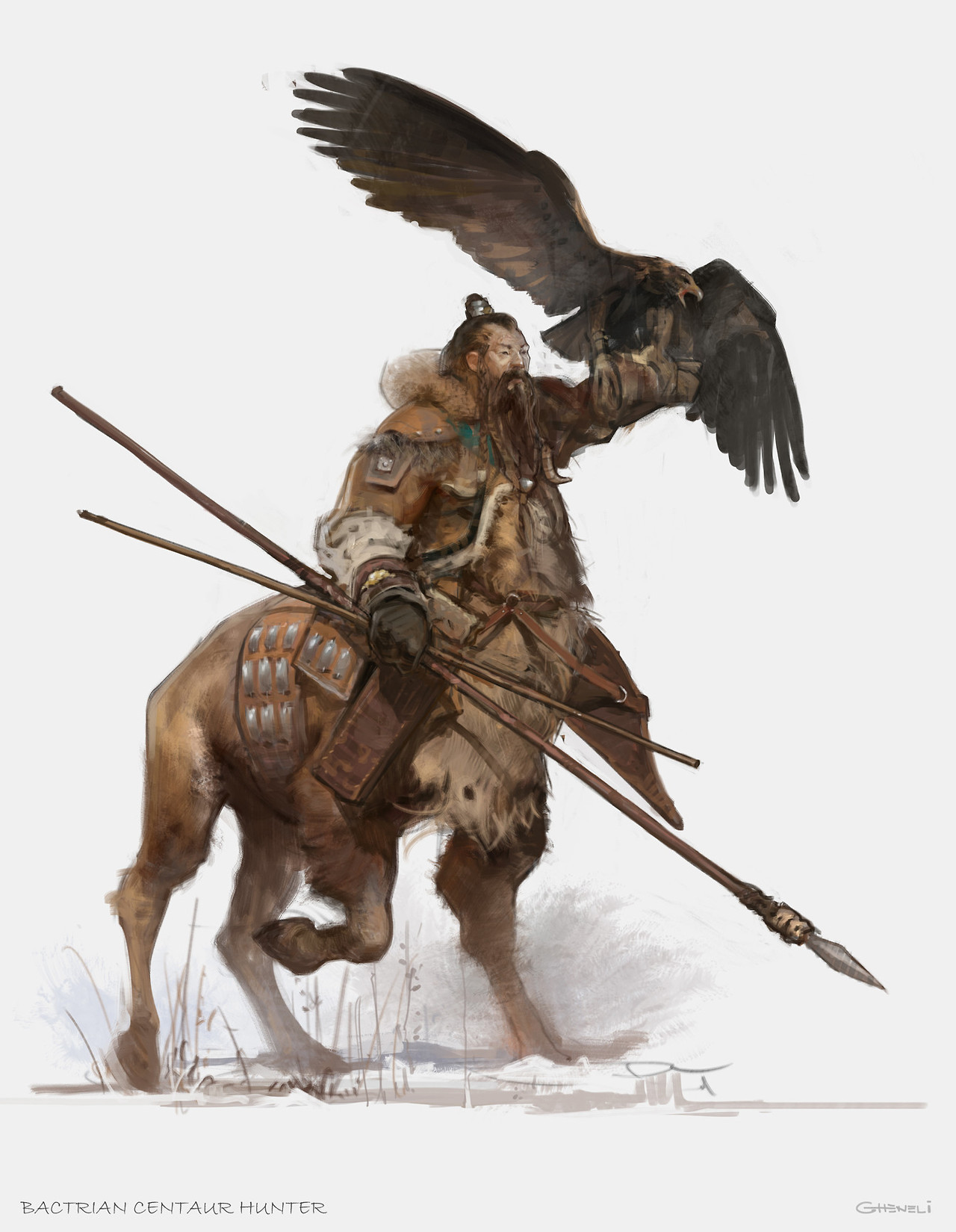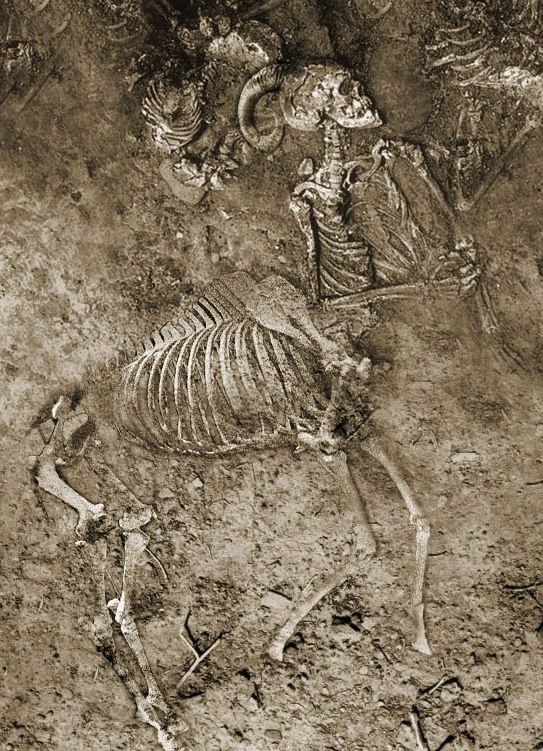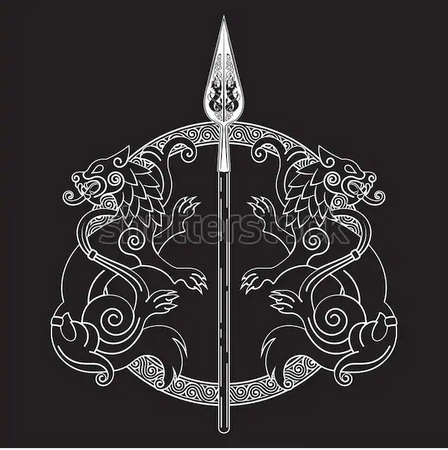Samartha
The Samartha (also Samarthans; archaic: Samarthians) are a monoancestral ethnicity located in the Khaghat region of northern Iroa. Comprised almost entirely of centaurs, the Samartha live as pastoral nomads; keeping small flocks of sheep and goats as they follow the migratory herds of wild saiga and tarpan across the Khaghat Steppe. They are the largest centaur ethnic group in all of Holos and are notoriously wary of outsiders. The Samartha frequently vie for territory and grazing rights with the Khaghate, another nomadic ethnic group of both monstrous and mortal lineages.
The Samartha are believed to have appeared in Iroa sometime during the Dawn Era, shortly after the creation and proliferation of the centaur species at the hands of Acien Tali: The Lady of All Wilds. The region they settled was ideal for centaur habitation, as had poor soil for agriculture but vast stretches of open grassland and prairie for grazing animals. Later early mortal settlements began to spring up to the south in what is today Tao-Tē and Rhalpalkan, allowing the early Samartha access to trade and new manufactured products.
However, by the end of the War of the Dawn and the First Intermediate Period, the Samartha culture had developed a distrust of outsiders, particularly mortals. This coincided with the arrival of a new ethnic group to the Steppe: the Khaghate. Much of what we know about the Samartha comes from Khaghate stories and traditions. In these tales, the Samartha are depicted as bloodthirsty isolationists who shirk metalworking and monument construction for herding and raiding. They even appear as the primary antagonists in the Khaghate’s genesis myth, "The Legend of Khaghate the First."
Since that time, the Samartha and the Khaghate have been locked in a constant struggle for territory, trade route access, and grazing rights. The Samartha live much in the same way they did during the First Intermediate Period, wearing only furs or hides and using only stone, wood, and bone tools. And while they do sometimes trade animal products for manufactured pieces such as woolen cloth or lumber, it remains taboo for a Samartha to make or use metal tools or weapons.
Culture
Major language groups and dialects
At one time, all Samartha spoke a number of languages collectively known as Old Samarthic. However, as the Samartha began to interact with and compete with the Khaghate, their languages began to become subsumed by the language of the Khaghate; Khaghat'oa. Khaghat’oa is itself derived from Old Samarthic but unlike the Samartha, the Khaghate as a culture prioritize the learning and proper use of Khaghat’oa. In fact, among the Khaghate, the inability to speak Khaghat’oa as it is understood by the community can result in the physical and spiritual exile known as dar’khagha. As a result, the many other Old Samarthic languages began to fade overtime and their grammar, phonology, and word usage became that of Khaghat’oa and the Khaghate.
Today, most if not all Samartha speak a dialect of Khaghat’oa. It is generally characterized as gruffer, with many vowels being voiced in the back of the throat and a larger number of long vowels. Additionally, some Old Samarthic words and language conventions abandoned by Khaghat’oa remain prevalent in Samartha communities, particularly words that can be voiced or emphasized using their operculum, an organ unique to centaurs that acts as a second and third set of nostrils at their withers.
Culture and cultural heritage
The Samartha are nomads, spending much of their time on the move as they follow the great herds of across the Steppe. Interestingly, the Samartha consume very little vegetables and almost no fruit. Most tribes keep small flocks of sheep and goats, which they use as a source for the main staple of their diet—fermented milk. Only when the animal stops producing milk is it killed for its meat.
Beyond milk, the majority of their diet is comprised largely of wild game; namely saiga, wild horses, caribou, aurochs, deer, and occasionally mammoth from the far north. This is supplemented with smaller game such as rabbits, voles, and fowl. To aid in catching these smaller creatures, many Samartha employ trained birds of prey. Falconry is a beloved past time and considered the national sport of the Samartha people. Samartha rarely hunt predators, though they will occasionally pursue certain magical beasts for their animal byproducts.
Archery
As centaurs, the Samartha have a number of advantages over mounted mortal warriors. Like many steppe peoples, Samartha train with a bow and spear almost from birth and are extremely proficient shots. They typically use longbows made of flexible yew or birch wood. Most mounted archers must rely on smaller compound bows to improve accuracy and aim around their horse's head. In contrast, the centaurean Samartha do not have this difficulty and can actually fire more powerful shots without sacrificing accuracy. This allows Samartha archers to deal lethal damage to the heavily armored Khaghate, even with stone-tipped arrows.Art & Architecture
While it is commonly believed that the Samartha built the many forgotten kurgans of the Khaghat Steppe, the Samartha do not build any great structures or create monolithic art. Additionally, their prohibition on working and using most metals means that most Samartha art is made from stone, wood, or animal products like bone or ivory. A few tribes carry small ornaments made of gold or cooper but these pieces are often traded for or commissioned by individuals.
Coming of Age Rites
Unlike some other centaur societies, young Samartha do not participate in a protoporos. Instead, most subadult Samartha put the exceptional energy by serving as scouts and warriors for their tribe. Only during times of great strife do individuals older than twenty years serve as active warriors in Samartha society.
Funerary and Memorial customs
One of the more sensational aspects of Samartha culture are their funerary rituals. When a Samartha dies of natural causes, (i.e. illness, accidental injury, environmental exposure) their tribe calls the deceased's kin to a funerary ceremony. In a practice called eparavur'trikar1, an earthen oven is constructed and the body is washed and prepared with sweet smelling herbs and spices. The body is then placed inside the oven and cooked. Those affines in attendance; or those who are not the deceased's brothers, spouse, or parents; then eat specific portions of the dead body such as their heart, arms, thighs, calves, and back. This is to ensure that those outside of the deceased's immediate family always carry a part of the departed with them. After the prescribed portions have been consumed, the rest of the flesh is cremated with the bones of the dead are taken by the family to be made into jewelry and other sacred items.
In situations where the deceased has died unnaturally, such as being killed by a foe or an animal, the body is left to be eaten by scavengers, such as vultures and ravens. This is believed to serve as an offering to both the nature spirits and to the god of war, Oheilion. After the flesh has been stripped off the body by animals, the bones are then gathered by the family, just as with an eparavur'trikar ceremony.
It is important to note that the Samartha do not consume anyone outside of their own kinship lines. To do so would be to carry the spirit of someone you didn't know—or worse yet, an enemy—with you until your death. Despite this, many travelers through the Steppe believe that the Samartha eat mortals or their own children, and so continue to treat them with fear and contempt.
Common Taboos
The Samartha are often stereotyped as backwards or unintelligent because of their culture’s prohibition on working or using metal tools and weapons. It is unclear where this staunch prohibition comes from, but it may lie in early druidic worship of the centaurs’ progenitor, Acien Tali. In some traditions, when the Unspoken One called Ókan tricked the goddess Calorba into killing her twin sister Talessra, the spears she threw were tipped of a precious metal, often said to be mithril or silver. In the Khaghat, they were made from temōrtra2, a rare material found in scattered craters across the forests of Iroa’s far north.
This has led to several druidic communities adopting prohibitions on the use of metal in certain circumstances. This can take the form of purifying a weapon before use, restricting the use of weapons made with certain metals, crafting metal weapons in a particular style or design to pay homage to Acien Tali, or trading for the weapons but not making the weapons themselves. Many of these communities have adopted alternative materials, such as bronze, steel, shadowglass3, or greenstone.
Yet few societies go as far as the Samartha, who have a strict prohibition on wearing, using, or crafting what they call “star metal.” This includes all silvery or greyish-looking metals, including tin, steel, iron, electrum, silver, mithril, and temōrtra. Copper and gold are allowed by some tribes but not others and most prefer to craft their weapons using chert stone, sharpened wood, or bone. On occasion, Samartha tribes have sought to prevent other groups from mining or collecting minerals they considered to be star metal. This has brought them into intense conflict with the Khaghate, whose Ogadinui claim that all Khaghate warriors must conceal their face within a full helm at all times.
Common Myths and Legends
Though not a story recounted among the Samartha, the "Legend of Khaghatan the First," the foundational myth of the Khaghate people features the Samartha as the primary antagonists for Tor, the First Khaghatan. Shortly after being exiled by his clan, Tor's clan and family were attacked by a group of Samarthians and his second daughter is killed. Tor learns of their fate from a vision granted to him by Oheilion, the Bloodied Lord and after committing himself to the Ogadinui, sets out to free his wife and surviving kin. After the death of his treacherous brother and a great battle at an ancestral kurgan, Tor and his family slay the remaining Samarthians and become the patriarchs of the Khaghate people.
Though their tribe is never named in the story, the "Samarthians" are in fact quite different from what we know of ancient and contemporary Samartha culture. They are depicted as actually sedentary, capturing a mortal encampment and taking prisoners back to a kurgan, where they feast and live in luxury for months without moving on. In truth, Samartha are not known to construct kurgans or any other kinds of monumental architecture and rarely keep prisoners or slaves except to sell.
Another misrepresented aspect of Samartha culture can be seen in the depiction of their sacrificial rites. Khaghate myths often claim that the Samartha are man-eaters, who sacrifice mortals to their gods and then consume their still-warm flesh. This is likely a syncretic idea that combines the real life capture and sacrifice of mortal slaves by the yikaria of Rhalpalkan with the Samartha tradition of eparavur'trikar.
Footnotes
1 eparavur'trikar — literally "the consumption of grief." From the words eparavur to "consume or devour" and or'trikar for "grief."2 temōrtra — literally “sky iron,” is the Khaghat’oa word for meteorite iron. It is found in small scattered deposits, such as the Chekeren Crater, left by an ancient meteor shower.
3 shadowglass — the common name for obsidian in many parts of Holos.
Diverged ethnicities
Encompassed species
Related Myths
Languages spoken
Related Locations
Falconry is a beloved past time among the Samartha
Though a nomadic steppe people, the Samartha do not construct kurgans or other monumental architecture
Should a Samartha warrior die in battle, their bodies are left out for scavengers to clean as an offering to the spirits
It is believed that silver Lycanlance of Calorba may be the origin of the Samartha's prohibition on metal tools

by LynxMB








Comments